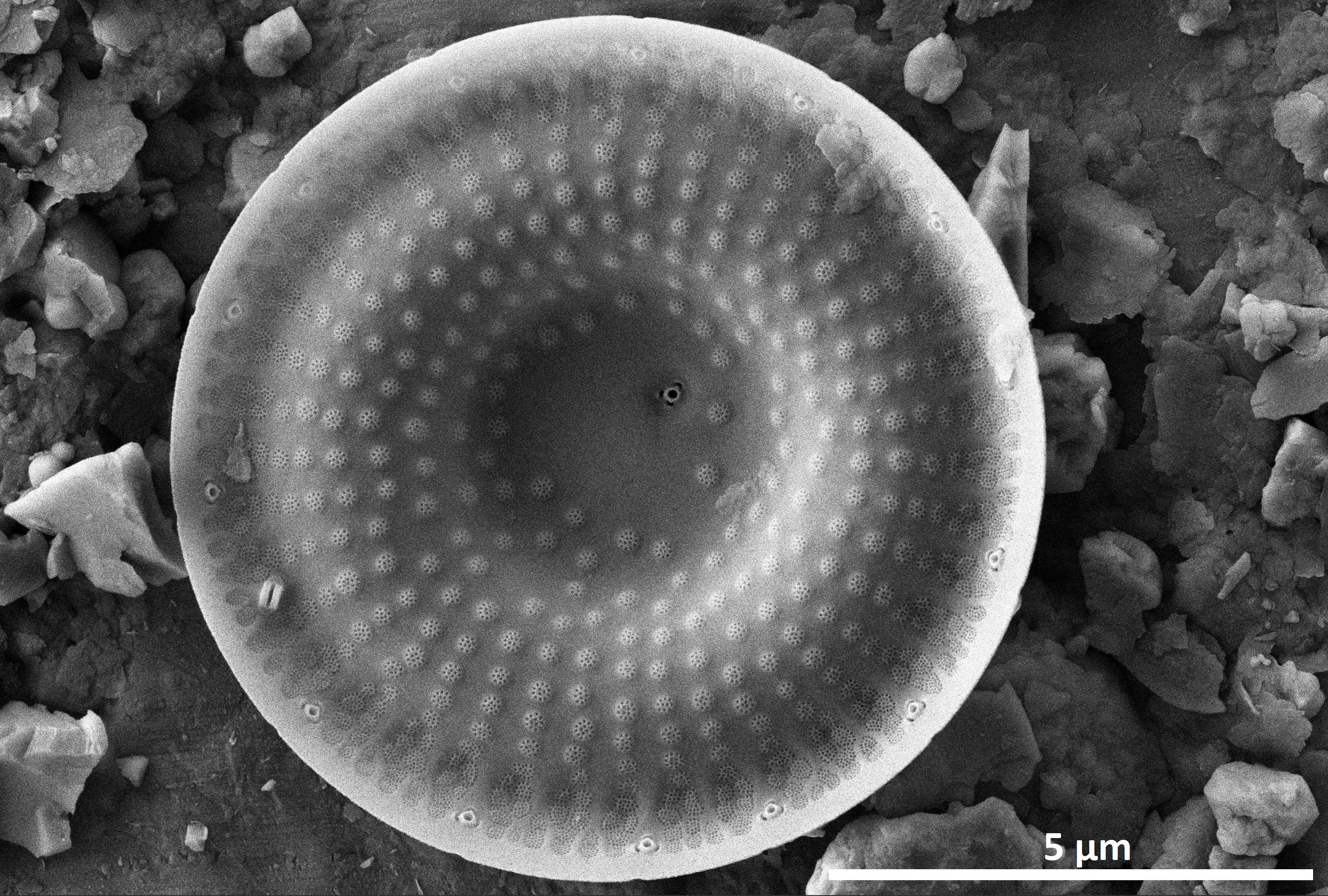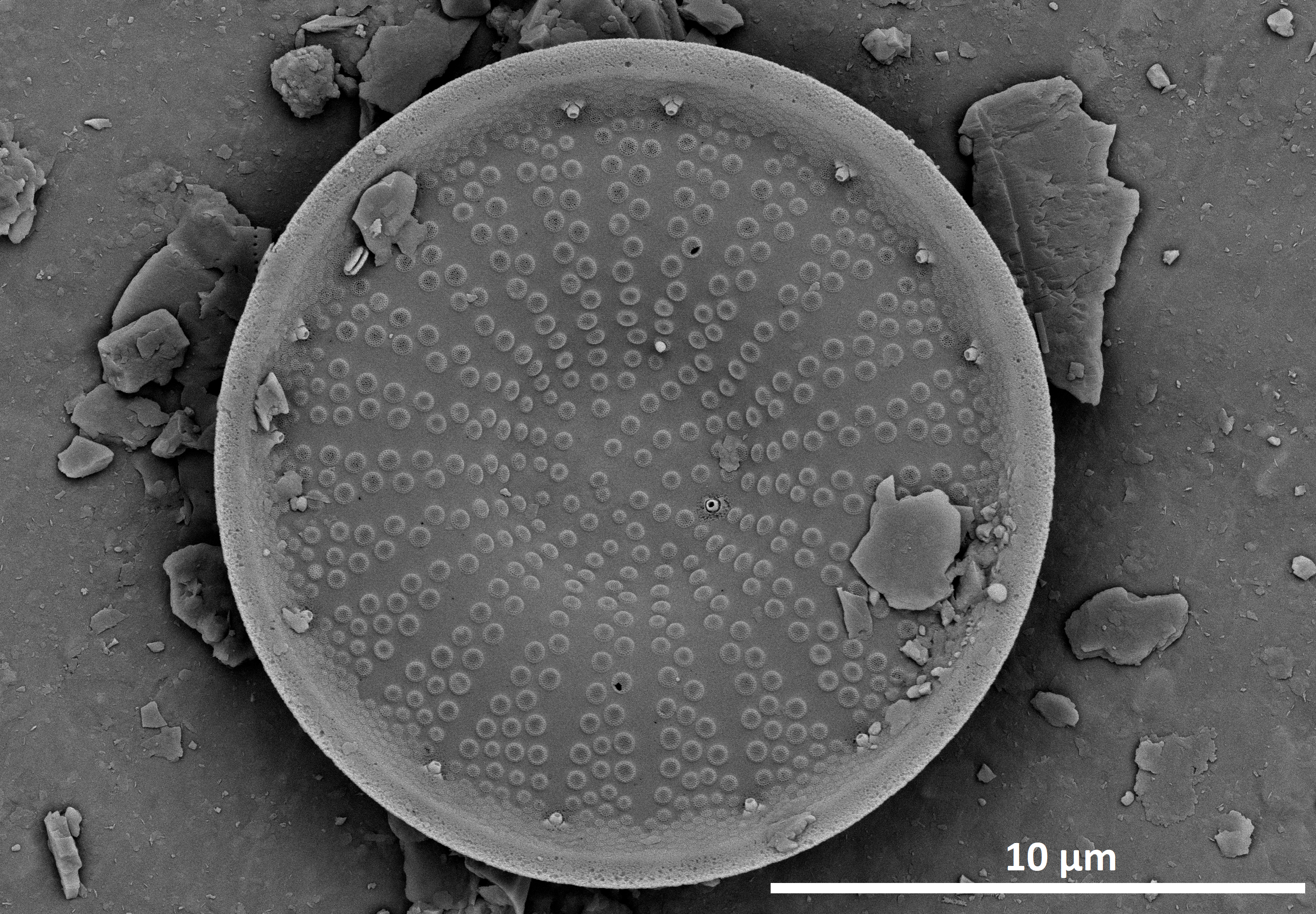
Valve of Stephanodiscus oregonicus (external view), a relatively large-celled diatom that dominated diatom assemblages in the pre-2000 CE sediment samples of Great Slave Lake. No central fultoportula present.
Scanning electron microscope image Credit: Paul Hamilton, Canadian Museum of Nature. CANA 131034

Valve of Stephanodiscus oregonicus (internal view), a relatively large-celled diatom that dominated diatom assemblages in the pre-2000 CE sediment samples of Great Slave Lake. No central fultoportula present.
Scanning electron microscope image Credit: Paul Hamilton, Canadian Museum of Nature. CANA 131034

Valve of Stephanodiscus oregonicus (external view), a relatively large-celled diatom that dominated diatom assemblages in the pre-2000 CE sediment samples of Great Slave Lake. No central fultoportula present.
Scanning electron microscope image Credit: Paul Hamilton, Canadian Museum of Nature. CANA 131034

|